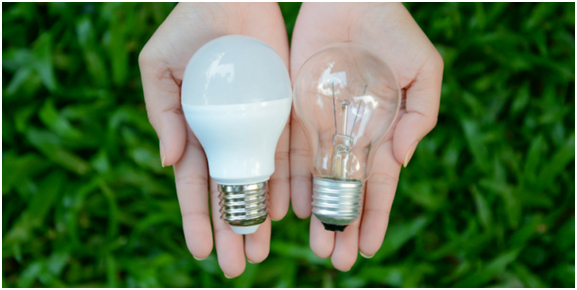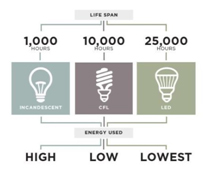
LED lights have emerged as the profound and innovative products of the lighting industry in the past few years. From creating fire with stones to designing smart lights, the human race has evidently come a long way. It’s a well known fact that these technologically advanced lights are gradually replacing the conventional systems. Whether it’s the homes or the offices and from industrial spaces to commercial complexes, LED lights have become the quintessential luminaries everywhere.
However, there are several details about LEDs that still remain unknown to a considerable level. Listed here are such fascinating facts about LED lights:
You may think that the concept of LEDs is relatively new but that’s not really the case. The LED technology is based on the natural phenomenon called Electroluminescence which was discovered in 1907 by Henry Joseph Round. After a lot of research throughout the years, Robert Biard and Gary Pittman invented and patented an infrared LED in 1961 for Texas Instruments.
However, this was not the end of it. In 1962, Nick Holonyack, who was a consulting engineer at General Electric Company, invented the first visible red LED light. Later, in 1972, electrical engineer named M George Craford invented the first yellow colored LED. Finally, in 1994, it was Shuji Nakamura who invented the first blue LED.
Well, maybe too many cooks don’t always spoil the dish!

Eco-friendly lights
As opposed to the present times, the LEDs were not used as bulbs at homes. It was the Monsanto Company which was the first entity to mass-produce visible LEDs. In 1968, the company produced LEDs as indicators and by 1970s, Fairchild Optoelectronics began producing low-cost LED devices for the manufacturers. After that in the year 1976, Thomas P. Pearsall invented a highly efficient and bright LED to be used in fiber optics and fiber telecommunications.
And you thought lights cannot be complicated, huh?

LED Lights vs Incandescent Lamps
We all know that LEDs are highly efficient as compared to the conventional lamps but do you know why? It’s because the incandescent lamps convert only 9-10% of the energy into light. However, LEDs can convert almost 100% of the energy into light.
Next time you have a hefty electricity bill, blame your bulb not your children!

LEDs are considered to be eco-friendly, obviously everyone knows that! But do you know why? It’s because these lights don’t contain any mercury and at least 95% of the parts are recyclable. In fact, the fluorescent tube portion of a compact fluorescent lamp (CFL) dies before any other component of the unit. This, in turn, creates tons of waste every month.
Got a Compact Fluorescent Lamp? What a waste!

The life cycle of LED lights are far more impressive than that of the incandescent lamps and the compact fluorescent lamps. On average, the LEDs can last for 50,000 hours while the newer models can even last for 1,00,000 hours. Contrary to this, the CFLs last for just 10,000 hours while the incandescent lamps are even worse with just 1,000 hours.
Literally the Performance of a lifetime!
